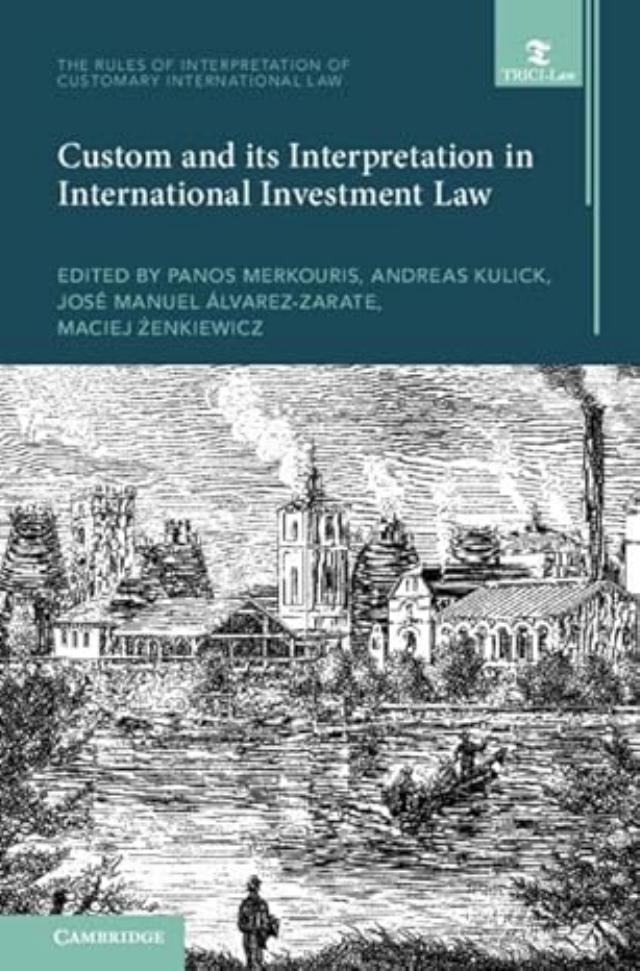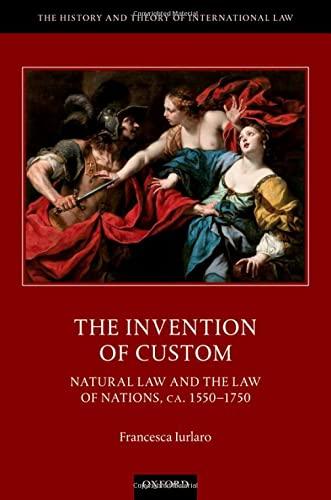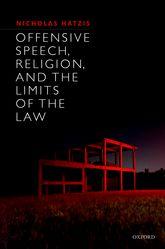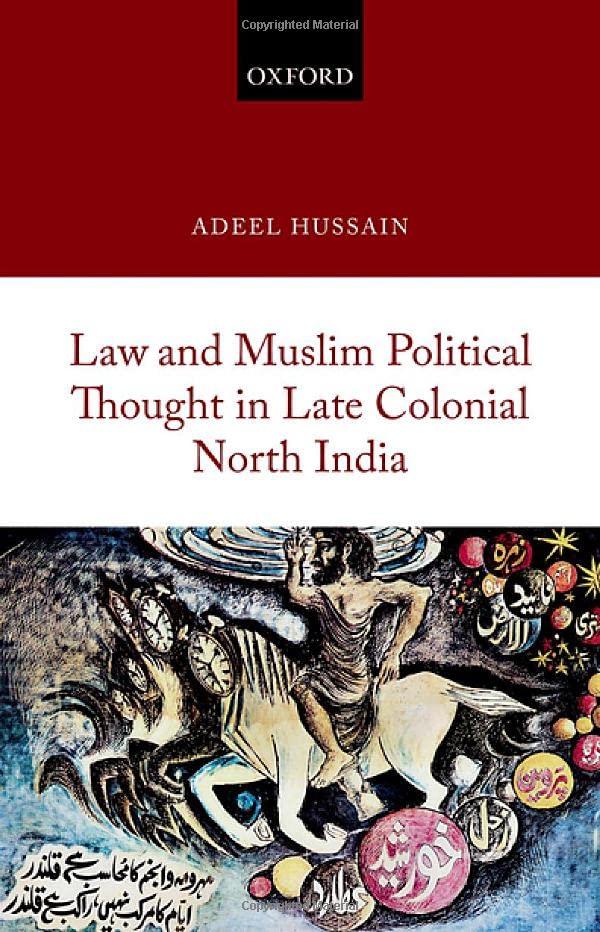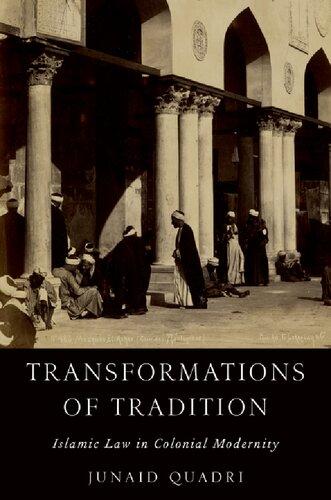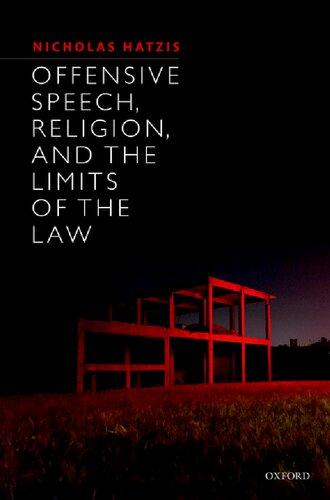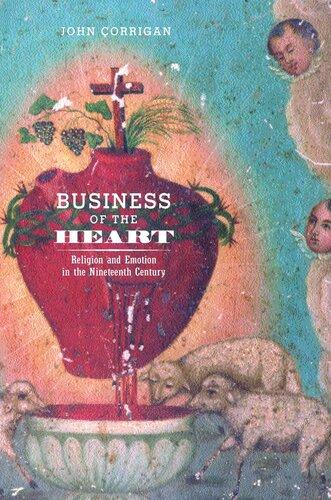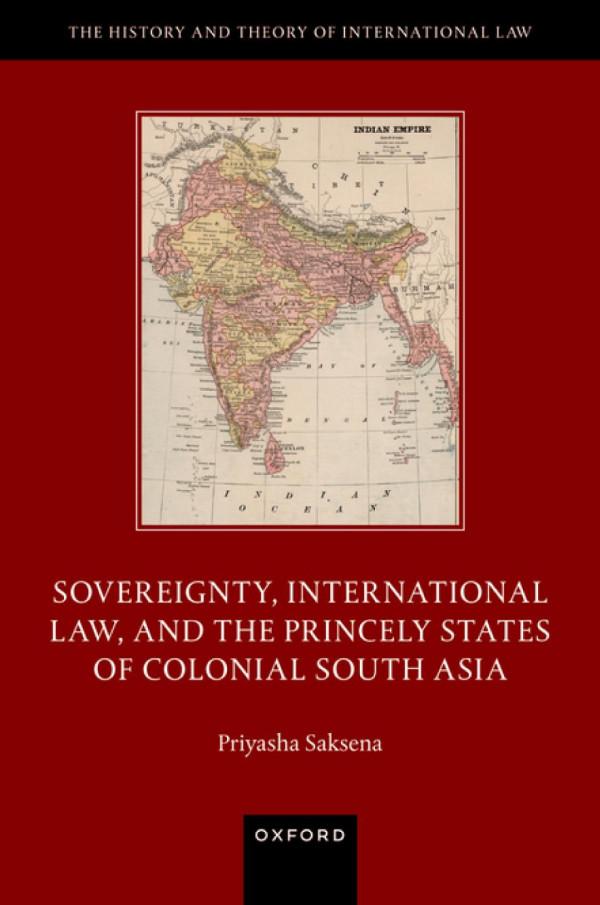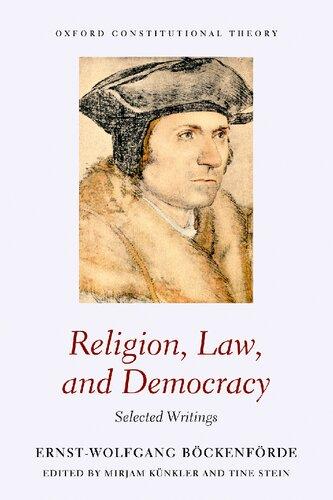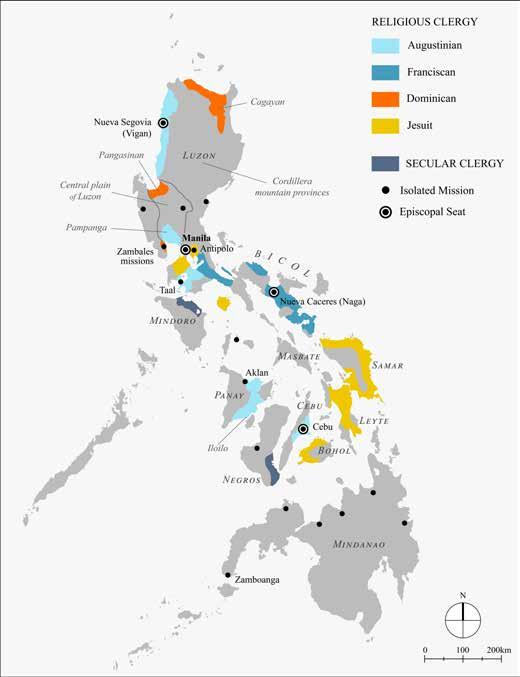Acknowledgments
This book represents one of several associated projects, which emerged over the course of many years. I want to thank the many friends, collaborators, and interlocutors who made these moments possible, and who continue to feed the hive mind of Philippine and Filipinx diaspora studies throughout the world. Without your insights I would not have written this book.
I would like to thank first the mentors in my life, both academic and personal, who passed away in the course of my completing this work: Philippine National Artist Bien Lumbera, Rosemary George, Marcel Henaff, Edel Garcellano, Dr. Luciano Santiago, and my father Dr. Renato Blanco, called Rene by his friends and family. Your words and example continue in the life and work of those you nurtured, among whom I count myself.
This book would not have been possible without the insights, enthusiasm, and encouragement of the book series editor Christina Lee. I would also like to thank Erika Gaffney and Randy Lemaire for steering me through the editorial process of the book’s publication. A grant from the UC Humanities Research Initiative allowed me to invite several senior scholars to review the book manuscript in 2020. Thank you to the participants whose observations, interpretations, and encouragement significantly contributed to the final shape of the book: in addition to Christina, Vicente Rafael, Ignacio LópezCalvo, Damon Woods, and Sally Ann Ness. Needless to say, I acknowledge any errors, oversights, or opinions in these pages as my own.
Different stages of the research and writing were sustained by different audiences, with many friends among them: Nicanor Tiongson, Julio Ramos, Philippine National Artist Virgilio Almario, Caroline Hau, Brian Goldfarb and Parastou Feizzaringhalam, Cynthia Sowers, Anna More, Karen Graubart, Ivonne del Valle, Phil. Congressman Kiko Benitez, Philippine National Artist Resil Mojares, Neferti Tadiar, Ricardo Padrón, Rey Ileto, Josep Fradera, Lola Elizalde, Oscar Campomanes, Eric Van Young, Sara Johnson, Nancy Postero, Christine Hunefelt-Frode, Yen Espiritu, Joi Barrios, Lulut Doromal, Ruby Alcantara, Yoshiko Nagano, Joyce Liu, Lulu Reyes, Paula Park, Jorge Mojarro, Santa Arias, Ana Rodriguez, Luis Castellví-Laukamp, Tatiana Seijas, Eberhard Crailsheim, Ruth Pison, Roberto Blanco Andrés, Fr. Blas Sierra de la Calle (OSA), Ricky Jose, Ino Manalo, Ernest Hartwell, Matthew Nicdao, Sony Bolton, Johaina Cristostomo, Ruth de Llobet, Nikki Briones Carson-Cruz, Daniel Nemser, Orlando Bentacor, Rachel O’Toole, Claire Gilbert, Marlon James Sales, Jánea and Juan Estrada, Mariam Lam, Leo Garofolo, Fr. Ericsson Borre (OSA), Isaac Donoso, Xavier Huetz de Lemps,
Julius Bautista, Tina Clemente, Kuan-Hsing Chen, Shu-fen Lin, Diego Luis, Juliana Chang, Ryusuke Ishikawa, Sarah Schneewind, Lisa Surwillo, María del Rocío Ortuño, Irene Villaescusa, Dana Murillo and Mark Hanna, Veronica Junyoung Kim, Koichi Hagimoto, Parimal Patil, Deirdre de la Cruz, Ana Ruíz Gutiérrez, Takamichi Serizawa, Susan Gilman, Adam Lifshey, and Jun Matibag.
My intellectual community during the period of writing this book came to largely revolve around my regular involvement in the intellectual community forged by the Tepoztlán Institute. My intellectual debt extends to the people I have come to know there and their immensely helpful feedback on chapter drafts: Josie Saldaña, Yolanda Martínez-López, María Elena Martínez (who passed away in 2014), Pamela Voekel, Kelly McDonough, Caroline Egan, David Kazanjian, and Gabriela Soto Laveaga. Thanks also to the leadership of the Tepoz Colectivo, including Elliott Young, Jorge Giovanetti, David Sartorius, Dillon Vrana, Marisa Belausteguigoitia Rius, Shane Dillingham, Adam Warren, Christen Smith, Osmundo Pinho, Itza Amanda Varela Huerta, Alaina Morgan, Araceli Masterson, Nattie Golubov, entre otres.
Many colleagues have played an essential role in my life of the mind as well as the university. Thanks to the staff and community of Latin American Studies. Thank you Claire Edington, who leads the Southeast Asia and Transpacific collective. Thanks also to Cindy Nguyen, Nancy Kwak, Simeon Man, Wendy Matsumura, Mohammad Khamsya Bin Khidzer, Christen Sasaki, Diu Huong Nguyen, Sarah Grant, Phung Su, Christina Scwenkel, Evyn Lê Espiritu Gandhi, Thûy Vo, and David Biggs for their enthusiasm and engagement in this shared project. With my fellow members of the editorial advisory board of the Journal of Early Modern Cultural Studies, I share a continuing multifaceted conversation of the early modern moment. Thanks to Daniel Vitkus for steering us through the vicissitudes of the field; and to Babak Rahimi, Sal Nicolazzo, Jacques Lezra, Susan Maslan, John Smolenski, Martin Huang, and Ulrike Strasser as well as Ivonne.
Thank you friends of the mind and heart, for your continued presence and encouragement: Max Parra, Consuelo Soto, Luis Martín Cabrera and Carol Arcos Herrera, Cristina Rivera-Garza and Saúl Hernández, Joseph Ramírez, You Xiu Min, Maribel and Manny Gaite, María D. Sánchez Vega, Aurelia Campbell, Daniel Widener, Dennis and Saranella Childs, Jacobo Myerston and Danielle Raudenbush, Elana Zilberg, Gloria Chacón, Martin Manalansan, Enrique Bonus, Lisa Lowe, Cristina Pantoja Hidalgo, Preachy Legasto, Fr. Jimmy Achacoso (JCD), Fr. Luis Soliven, Theo Gonzalves, Luz Mena, Ipat Luna, Howie Severino, Mars Estrada, Thelma Estrada, Wendell Capilli, Neil Garcia, Nerissa Balce, Fidelito Cortes, Butch and Beng Dalisay,
Frances Makil, Bliss Lim, Trina Pineda, Leo Nery, Antonio Tinio, Bomen Guillermo, Dylan Rodriguez, Robyn Rodriguez, Edward Nadurata, Maria Bates and Patrick Colmenar, Gary Colmenar, Happy Araneta, Abe Ignacio and Christine Araneta, Atilio Alicio, Augusto Espiritu, Richard Chu, Vernadette Gonzalez, Marilou and Malou Babilonia, Vina Lanzona, Judy Patacsil, Sal Flor, Felix Tuyay, Thelma and Audie de Castro, Jay Perez, Josen Díaz, Jimiliz Valiente, Heidi Tuason, Giselle Cunanan, Denise Cruz, Michael Gil Magnaye and Roy Ferreira, Kazim Ali and Marco Wilkinson, Erin Suzuki, Nina Zhiri, Lisa Lampert-Weissig, Amelia Glaser and Eran Mukamel, Tara Knight, Ross Frank, José Fusté, Michael Davidson, Zeinabu Davis and Marc Cherry, Cristina della Coletta, Brian Byun, Badri Swaminathan, Nayan Shah and Ken Foster, Jeffrey Minson and Lesley Stern (who passed away in 2021), Mica and Joe Pollock, Erin and Josh Graff Zivin, Sarah Gualtieri, David and Julianne Pedersen, Shelley Streeby and Curtis Marez, Lisa Yoneyama and Takashi Fujitani, Tom LaPere, Erin Dwyer, and Keith McNeal, Eugene Pak, John Barron, Lauren Wood, Scott Frederick, Wendy Stulberg, Anna Parkinson, Will and Dana Tiao, Colleen Chien and Dirk Calcoen, Amit Nigam and Scott Linder, Holly and Bill Gastil and the SD Ashtanga community, Heather Fenwick, Jorge and Mariana Bustamante, Bill and Lorena López-Powers, Rich Schulz and Marisol Marín, Larry and Sarah Carr, and Aimee Santos.
I would be remiss not to express my gratitude to students past and present, many of whom have helped me think through the most complex takeaways from my field of study. They include: Mayra Cortes, Jessica Aguilar, Marisol Cuong, Maya Richards, Steven Beardsley, Noelle Sepina, Vyxz Vasquez, Satoko Kakihara, Shi-szu Hsu, Ma Vang, Malathi Iyengar, June Ting, Theofanis Verinakis, Niall Twohig, Lyra Cavada, Claudia Vizcarra, Cindy Pinhal, Jodi Eisenberg, Yelena Bailey, Scott Boehm, Leonora Paula, Andrew Escudero, Carla Rodriguez, Adam Crayne, Kate Thompson, Ivy Dulay, Rocío Giraldez-Betrón, Deanne Enriquez, Melissa Wang, Frida Pineda, Kat Gutierrez, Corrine Ishio, Chris Datiles, Amanda Solomon, Jonathan Valdez, Graeme Mack, and Ren Heintz.
Special thanks go to my mother Benita, with whom I have often consulted on matters pertaining to Tagalog language as well as Philippine culture more broadly. Among my extended family I would like to thank the Blanco, Hermogenes, Soliven-Vega, and Doromal families, Tita Yoly Ganchorre, Menchie and Jim LaSerre, and Monika and Olaf Jaeger, for providing me with every manner of assistance in the Philippines, the US, and abroad.
I save my final and most affectionate gratitude for last: to Marivi and Aspen, without whom nothing is possible.
Introduction: Towards a CounterHistory of the Mission Pueblo
Another stereotype that needs reexamination for a better understanding of the Filipino people during the Spanish occupation is the supposed ease, speed, and thoroughness of the Conquest.
— William Henry Scott, Cracks in the Parchment Curtain, 22
The Great Unsettlement
In 2009, UCLA archaeologist Stephen Acabado published a surprising and controversial discovery from his research on the dating of the Ifugao rice terraces in the Cordillera Mountain region in northern Luzon (Philippines) (see Figure 2). As the author mentions in the introduction to his study, the rice terraces are included in UNESCO’s World Heritage List, which describes the terraces as a “living cultural landscape of unparalleled beauty… Built 2000 years ago and passed on from generation to generation, the Ifugao Rice Terraces represent an enduring illustration of an ancient civilization that surpassed various challenges and setbacks posed by modernization.”1 UNESCO’s description, however, relied on early scholarship of the rice terraces, which went largely unquestioned for decades. This earlier estimation was based largely on speculation of how long it would have taken for the existing Ifugao highland population to build such a vast network.2 Acabado’s research, however, based on chronometric data from carbon samples along a section of the network close to the lowland regions of Luzon, determined that, far from being 2000 years old, their creation and period of greatest expansion took place after 1585 – in other words, after the arrival of the Spaniards. His research confirms a hypothesis first developed by Felix Keesing: “the
1 “Rice Terraces of the Philippine Cordilleras,” web.
2 Stephen Acabado, “A Bayesian Approach to Dating Agricultural Terraces,” 802; see also Acabado, “Colonial Resistance through Political and Economic Consolidation,” 287–301.
Blanco, J.D., Counter-Hispanization in the Colonial Philippines. Amsterdam: Amsterdam University Press 2023
doi: 10.5117/9789463725880_ intro
terraced landscapes of the Ifugao are the end-result of population expansion into the Cordillera highlands in response to Spanish colonization.”3 Stitching together Keesing’s history with this data led Acabado to the conclusion that the evidence of “indigenous population migration away from the Spanish and into this highland refugium [was] significant enough to expand terrace systems” (811).
While Acabado’s findings may come as a great disappointment to both UNESCO and cultural nationalists touting the antiquity of this seemingly superhuman feat of environmental engineering, his research exposes us to a different kind of amazement. It allows us a panoramic view of a secret history unfolding just outside the gaze of the Spanish colonizers – for two and a half centuries. If we view the terraces as an invention of the early modern Spanish period rather than antiquity, they attest to a massive, collective refusal of colonial rule: a refusal and flight of coastal and lowland populations into the Luzon northern hinterlands, which led to the great counter -settlement of these highlands between the sixteenth and (at least) seventeenth centuries; and, carried on undiscovered by Spaniards until around the 1750s. 4
Acabado’s research has several implications. The first and most important is that the overweening focus on “Hispanization” in Philippine historiography has obscured a twin and counter-history of Spanish depredation, native deracination and derealization, terror, and (in the case of these highland refugee populations) retreat from the coastal and lowland populations. Works like Robert Reed’s classic study on “the rapid and complete Hispanization of the Philippines” through Christianity and urban settlement, for example, confidently estimated the procurement of Spanish suzerainty as early as the third decade of the occupation: an estimation that the work of recent scholars like Acabado has debunked.5 In contrast, the history of the backlands phenomenon in Luzon and other parts of the Philippines reinforces the larger thesis made by Southeast Asian historian and anthropologist James Scott on the unwritten and suppressed histories of unsettlement among upland peoples throughout Southeast Asia. As Scott writes, “The history of
3 Cited in Acabado, “A Bayesian Approach,” 803. Acabado compared his results with other historical data: most significantly, the disappearance of sixty villages in the lowland areas exposed to the Spanish presence between 1739 and 1789, compared to the preservation of over fifty villages in the highlands from around 1660 to the present day. See ibid., 813; and Acabado, “Taro Before Rice Terraces,” 296.
4 Acabado, ibid. 286.
5 See Robert Reed, Hispanic Urbanism in the Philippines: A Study of the Impact of Church and State, 11.
hill peoples is best understood as a history not of archaic remnants but of ‘runaways’ from state-making processes in the lowlands… The effect of all state-making projects… was to create a shatter zone or flight zone to which those wishing to evade or to escape bondage fled.”6
The case of the highland Ifugao – also called Igorots or Igorotes, although this term has grown to encompass the Kalinga, Benguets, Bontocs, and Apayos – as well as untold other indigenous identities, is particularly instructive. This culture, routinely derided or condemned by Spaniards as primitive, turns out to be a rather modern (or early modern) invention: an amalgamation of different indigenous groups living between the coast and the highlands, who became “Igorot” in the layered movements of flight, desertion, and apostasy from the Spanish conquest and mission pueblos.7 Cultural anthropologist Alicia Magos, who researches the upland
6 See Scott, The Art of Not Being Governed, 24. Scott’s argument draws in part from another (Philippine) anthropologist, William Henry Scott, who argued that the Philippine highland group identified as “Igorots” were actually the amalgamation of generations of lowland assimilation into the highlands, propelled by flight from Spanish dominion. See The Discovery of the Igorots; as well as “The Unconquered Cordilleras” in Rediscovery, 31–41; and Of Igorots and Independence, 11, 29–36.
7 See William Henry Scott, “The Unconquered Cordilleras,” 35. For a comparative instance of “mistaken primitivism, see the case of Allen Holmberg’s study of the Sirono of Bolivia, in Charles Mann, 1491: New Revelations of the Americas Before Columbus, 3–34.
Figure 2: Banaue rice terraces, ifugao Province. Copyright © John Crux / alamy stock Photo, 2022.
dwellers of Central Panay – a large island south of Luzon, in the Visayas region – arrived at a similar conclusion, based on her study of Bukidnon epics. Magos was initially struck by the boat-building tradition that these mountain people had retained for centuries through this oral tradition, after they had ceased to build boats or live in the coastal areas of the island. In fact, one of the chanted epics she succeeded in recording (the Humadapnon), which belonged to a severely endangered oral tradition, describes frequent episodes of sea travel. Her conclusion was that, while pre-Hispanic settlers on the island probably moved farther into the interior before the Spanish arrival, “[they] were later joined by other people who wanted to escape military recruitment during the Spanish regime… as some Spanish records of the early Spanish period mention the movement of lowlanders to the interior to escape tribute, forced labor and military conscription.”8
The work of scholars like these leads to a second implication that this book will explore in greater detail. The point of contact, contiguity, and re-encounter between these histories of settlement and unsettlement was captured in the voluminous chronicles, correspondence, and literature of the mission frontier, which constituted most of the archipelago until at least the end of the eighteenth century. Yet the latter history remains stubbornly invisible. Why? While classic works of Philippine historiography would confidently pronounce that urban resettlement constituted a great success of Spanish colonial rule, and particularly the accomplishment of the monastic Orders and the Jesuits, one need only stare at the rice terraces in Banaue and other highland areas to acknowledge the equal success of native flight and escape from resettlement. This success unfolds before the beholder like words across the pages of a living book.
This living book, which substantiates the work of many recent scholars in history, anthropology, literature, and the arts, calls for a rethinking of Philippine history in the early modern period with greater attention to the colonial subjects who experienced it rather than the architects who imagined it. It is not just that the architects were writing at a far remove from their subjects; as I will argue, it is that their interpreters, detractors, translators, and even the architects themselves, engaged in acts of the imagination and fiction to obscure the lasting legacy of social anomie in the attempted projection of colonial society. The body of work that resulted from this imaginary is the literature of “spiritual conquest.”
8 See Magos, “The Sugidanon of Central Panay,” in Edukasyon: Harnessing Indigenous Knowledge for Education, 129. See also F. Landa Jocano, Sulod Society
By reading this literature of the early modern period against that other living “book” of native flight and deracination etched into the Ifugao rice terraces, I argue, a different history comes to light. For one thing, the divergent character of this (counter-)history suggests that the genesis of Philippine colonial society, which emerged around the consolidation of mission-towns or doctrinas administered by Religious Orders, did not and does not reflect the consequence of the nebulous ethno-historical process of “Hispanization” as it is often portrayed; but rather its opposite – counter-Hispanization.9 That is, mission-towns, far from initiating the process by which Spanish laws would be implemented in the frontier provinces, and in which Indian subjects would culturally assimilate Spanish customs, instead perpetuated a state of social anomie or lawlessness that the conquest had unleashed in these regions.10
Moreover, the religious imaginary order, even fantasy, that was expressed in the literature of Spain’s “spiritual conquest,” had a political function: it supplanted the (absence of) law in the name of supplementing or promising it. Examining these religious and historical texts as examples of literature and even fiction will enable us to fill in the gaps of the overarching frame(s) of colonial history, up to the point of calling these very frames into question. The outsized role of the religious imaginary in the writing of colonial history, in inverse proportion to the administration of law and political economy in the frontier provinces under the pastoral care of religious ministers, thus not only calls for a drastic revision of that history, but also a broader reconsideration of the role played by frontier provinces in the Americas as well as the Philippines, in the paradoxes of Spanish rule overseas and in the role of popular Christianity in colonial society.
Contrary to the general consensus in Philippine historiography, which credits the mendicant Orders and the Jesuits for curbing the impunity and violent excesses of the conquest, and facilitating a long, peaceful, and gradual conversion of the population to Christianity, I have focused instead on how the literature and politics of spiritual conquest reflect the contribution of these ministers to a protracted period of social anomie throughout the mission provinces for most of the colonial period (sixteenth-eighteenth
9 The locus classicus of this theory is John L. Phelan’s Hispanization of the Philippines: Spanish Aims and Filipino Responses 1565–1700.
10 My understanding of social anomie draws from anthropologist Victor Turner’s studies of liminality, social drama, and communitas, although I apply it specifically here to the literal suspension or malleability of laws under the immunity and impunity of religious privilege throughout the Philippines. See Turner, Dramas, Fields and Metaphors, 23–59 and 231–271. See also Marvin Olsen, “Durkheim’s Two Concepts of Anomie,” 37.
centuries). Instead of the mission serving as a “frontier institution,” as Herbert Bolton famously characterized the mission in Latin America, the historical research and literary analyses in this book show that the mission served instead as an agent of frontierization – a term coined by Mexican historian Cecilia Sheridan Prieto to describe the social consequences of the mission complex in northern Mexico.11 The evidence of social anomie, terror, and native maladjustment to Christianity and resettlement, in any case, finds abundant documentation in the religious chronicles and correspondence of the Orders themselves. Our difficulty in seeing and recognizing it as such stems from the narrative pretension and imaginary reach of “spiritual conquest” as the organizing metaphor of Philippine history in all areas outside of Manila (and perhaps Cebu) throughout the colonial period.
In tracing the historical arc of this narrative and the imaginary matrix it sustained, I will advance several interrelated arguments, some more explicitly than others. The first is that the events of Philippine history recorded in the chronicles of the religious Orders, along with the reports and correspondence with the Crown and colonial government, are anchored in an imaginative frame that arises out of Christian theology and, as such, deserve to be studied as works of creative literature as well as for their historical content. The second is that this imaginative frame had a political and a pastoral function. In addition to representing Philippine history in ways instructive, entertaining, and exemplary to the religious Order in question and also fellow (and oftentimes rival) religious Orders, these chronicles engineered the disappearance of the conquest as a historical fact, while reinforcing the protracted period of social anomie that ensued. They did so through their defense of the continued legal and ecclesiastical autonomy of the religious Orders and the mission lands from any effective oversight or unmediated exercise of civil or official Church authority. The literature of spiritual conquest, in other words, doubled as a manifesto for a de facto monastic sovereignty, as nineteenth-century propagandist for colonial reforms Marcelo H. del Pilar identified it; or “monachocracy,” as scholars like Jean-Paul Potet call
11 “ The Mission as Frontier Institution in the Spanish-American Colonies” was the title of a well-known essay by Herbert Bolton in 1917. Together with the fort or garrison, Bolton argued, the religious mission served as a “pioneering agency” that was tasked to fulfill both a material and spiritual end through the forced concentration of native populations [Sp. congregación or reducción] and their conversion to Christianity. See Bolton, “The Mission,” 42–61. On “frontierization” [Sp. fronterización], see Cecilia Sheridan Prieto, Fronterización del espacio hacia el norte de la Nueva España, 63–64.
it today. 12 Religious writings like the historical chronicles of the religious Orders represented Christianity to both colonial officials and natives alike as the continuation of an unfinished conquest of the provinces outside Manila; and as an effective proxy for law in the law’s absence or more specifically abeyance in these areas.
Third, the very same weakness of the Crown and colonial government upon which the authority of the religious Orders was based, also forced friars and Jesuits to rely on the very same peoples they were trying to resettle and convert. The literature of spiritual conquest, while overtly celebrating the willingness and enthusiasm of many natives to freely convert to Christianity under colonial conditions, thus also inadvertently reveals the co-invention of Philippine Christianity by friars and natives alike: a protracted surrender to Spanish rule under the religious ministers; the acceptance and refunctionalization of the Devil as a cipher for the native spirit world; the phantasmagorias of miracles and apparitions, as well as their routinization; and the necessary persistence of a frontier that made any form of effective colonial governance impossible.
Fourth and finally, the literature and imaginary matrix of spiritual conquest provide the model for the earliest significant examples of literature and theater in vernacular Tagalog. The significance of these early examples, however, lies not in the conformity of these works to their European models but rather their discrepancy and their preoccupation with the emergence of an ersatz colonial society under the mission town or doctrina and the stubborn perseverance of older pre-Hispanic forms of political authority, debt slavery, and poetic expression. 13 With the increased contact between the mission regions and the colonial metropolis of Manila as the seat of colonial government in the eighteenth century, came the proliferation of new practices, ambiguously referred to as native custom(s) [Tag. ugalí ], which ultimately gave the lie to Christianization and colonial rule.
Taken together, these arguments aim to provide the sketch of a counter-history of mission settlement: demystifying the mission as the magical apparatus that sublates the collective trauma of a subjected people, brutalized by massacre, deracination, and cultural genocide, under the providential narrative of Christianity and civilization. The coherence of
12 See Pilar, La soberanía monacal en Filipinas: apuntes sobre la funesta preponderancia del fraile en las islas, así en lo politico como en lo económico y religioso; and Potet, Seventeenth-Century Events at Liliw.
13 See Virgilio Almario, Muling Pagkatha sa Ating Bansa, 116-117.
this counter-history derives from the ideas of counter-Hispanization, the staging or mise-en-scène of Christian phantasmagorias, and the evolution of a baroque ethos, which I describe briefly below.
Beyond the “Hispanization” thesis
Counter-histories inevitably pit themselves against established certitudes that connect historiography with the perceived injustice of the status quo. In this case, my characterization of Philippine colonial society under the mission doctrinas as a space of social anomie, as well as its influence on the dual genesis of native custom, popular or “folk” Christianity, confronts perhaps the best-known account of the missionary endeavor in the Philippines in English, John Leddy Phelan’s Hispanization of the Philippines (first published in 1959). In Phelan’s study, the author describes this culture and society as the result of two drives, “Spanish aims” and “Filipino responses.” The former was expressed as Hispanization, which the Crown sought to achieve with the assistance of the Church and the religious Orders, i.e. through “Christianization.” The result of this effort, however, amounted to what Phelan identified as partial, or incomplete Hispanization. 14 His explanation for why the Philippines was not “fully” Hispanized pointed to the main agents charged with concentrating the native populations into towns and converting them to Christianity: the religious Orders, both monastic and Jesuit. Instead of Hispanization-through-Christianization, Phelan argued, the transplantation of Christianity to the Philippines brought about its “Philippinization.” While Phelan doesn’t clearly articulate what such a term entailed, readers were left to presume he meant the preservation of pre-Hispanic customs and traditions, along with the selective appropriation of Christianity towards the production of cultural syncretism. The relationship between these two ostensible responses, however, remained ambiguous.
One must credit Phelan for the elegance with which his exhaustive research on the progress and setbacks of the colonial government during the first century and a half of Spanish rule was presented.15 Yet many
14 John Phelan, The Hispanization of the Philippines, 158–159.
15 A s Damon Woods has astutely pointed out, Phelan’s “partial Hispanization” thesis was in part a response and modification of the earlier, uncritical appraisal of the religious Orders in New Spain by Robert Ricard (private communication). See The Spiritual Conquest of Mexico
A more systematic critique of Ricard’s views appears in James Lockhart, The Nahuas After the Conquest, 2–5. Lockhart presents a compelling alternative to the evolutionism found in Phelan,
succeeding scholars have pointed out how his rather Hegelian system of abstractions (a fact to which he himself confesses: see 153) also ended up obscuring the historical events and cultural artifacts through which an identification of what is “Spanish” versus what is “Filipino” even comes about.16 The nebulous character of the ethnohistorical processes laid out by Phelan – Hispanization, Christianization, and Philippinization – have nevertheless become quasi-permanent placeholders for a diverse and oftentimes divergent set of historical occurrences. In fact, this self-referential structure of Hispanization-Christianization-Filipinization has allowed for fuzzy sociological theory to substitute for historical knowledge. This substitution finds a clear example in Phelan’s articulation of “partial” or “uneven” Hispanization:
The paradox is that Spanish success issued from Spanish failure. The Spaniards did not accomplish as much as they set out to do, and this result enabled Filipinos to absorb a modest amount of Hispanic influence without breaking too abruptly or too completely with their preconquest way of life. The Filipinos were partially Hispanized with a minimum of psychological and physical damage. The same result did not occur in either Mexico or Peru (158–159: italics added).
One cannot argue, of course, with the assertion that “Spanish failure” appears as a recurring theme in both missionary and secular literature and historiography produced throughout much of the colonial period. But the certitude of Phelan’s summation begins to fall apart when we begin to question who exactly these Spaniards were; and what they presumably set out to accomplish. Even a cursory analysis at the enduring conflicts between the colonial government, royal grantees or encomenderos, the official Church hierarchy or bishopric, and the regular or monastic Orders (including the Jesuits) reveals that their goals were more often than not incompatible.17 So conflictive, in fact, that it leads us to wonder what one
based on three stages of encounter and interaction between Spanish and Nahua culture in central Mexico which advanced the nature and character of “double-mistaken identity” (442–446).
16 See, for example, Vicente Rafael, Contracting Colonialism, 5–6; Reynaldo Ileto, Filipinos and Their Revolution, 29–31; Carolyn Brewer, Shamanism, Catholicism and Gender Relations in Colonial Philippines 1521–1685, xxii; and Damon Woods, The Myth of the Barangay, 246–247.
17 For a brief history of the encomienda institution in the Philippines, see Eric Anderson, “The Encomienda in Early Philippine Colonial History,” 25–36. Encomienda entailed the rewarding of royal grantees (encomenderos) with the right to collect tribute and extract labor from the subject native population within a given area, provided that they also helped to finance the concentration
can or can’t presume to be the meaning and goal of “Hispanization.” If we understand this term, broadly, to entail the acculturation of colonial subjects to Hispanic institutions of government and society, whether this meant the introduction of colonial laws and policies into concentrated settlements, the abolition of pre-Hispanic institutions like debt slavery, the secularization of mission churches into parishes under the official Church, and the teaching of Spanish to native peoples, one would have to conclude that neither encomenderos nor the religious Orders shared this goal: in fact, for most of the colonial period they were adamantly opposed to it. What then, constituted the measure of Spanish “success” or “failure?”
Another set of problems emerges when we consider the other side of Phelan’s conclusion, which was that the colonization of the Philippines exercised a “minimum of psychological and physical damage… [which] did not occur in either Mexico or Peru.” Let us grant at the outset that, since the publication of Phelan’s thesis, historians have drastically revised their estimation of depopulation in the Philippines during the first two centuries of Spanish rule.18 Linda Newson’s research, for example, estimates the decline of the native population by around one third, depending on the region. While such a figure clearly doesn’t approach the scale of depopulation in the Americas in the wake of the Spanish invasion, it nevertheless compels one to at least question the easy, almost flippant character of Phelan’s remarks regarding “minimum psychological and physical damage.” In fact, nineteenth-century expatriate propagandist for colonial reform and national martyr, Dr. José Rizal had earlier arrived at the complete opposite conclusion to that of Phelan after researching the colonial history of the Philippines in the British Library:
Scarcely had [the indigenous peoples of the islands] been brought under the Spanish crown, when they were forced to sustain with their blood and the tribulations of their children the conquistador wars and ambitions of the Spanish people, and in these struggles, in that terrible crisis
[reducción] of the population in towns and villages as well as support the missionaries in the task of religious conversion. Anderson characterizes it as an “irregular system for extracting labor, alluvial gold and some local native production from contacted Indian peoples” (26), which persevered in the Philippines despite its demise in the Americas because of “the frontier nature of the colony” (27). He clarifies this to mean that, outside the immediate vicinity of the Spanish cities Manila, Cebu, and Arevalo (Iloilo City), “Private encomiendas were purposely concentrated on the frontiers where their continuing military role was deemed necessary” (33).
18 See, for example, Donald Hall, A History of South-East Asia, 252; and Eric Anderson, “The Encomienda in Early Philippine Colonial History, 32.
when a people changes its form of government, its laws, usages, customs, religion and beliefs, the Philippines became depopulated, impoverished and retarded – caught by surprise in their metamorphosis, having lost confidence in their past, without any faith in their present and with no hope of fortune in the years to come… [Filipinos] forgot their writings, their songs, their poetry, their laws in order to learn by heart other doctrines, which they did not understand, other morals, other tastes… They were made abject, degraded in their own eyes, ashamed of what was distinctively their own, in order to admire and praise what was foreign and incomprehensible; their spirit was broken and they bowed down… And in this way the years and centuries passed.19
The two assessments cannot both be right. Neither can one square away the implication of Rizal’s argument with the one following from Phelan’s: the implication that the cultural transformations and conflicts brought about by Spanish rule in the Philippines, mutatis mutandis, very much resemble those examples that come from New Spain or the viceroyalty of Perú.20 Yet one might say that the historiography of Philippine Christianization as “spiritual conquest” boils down to just such an attempt to do so.
The best-known response from among Philippine Studies scholars to Phelan’s Hispanization thesis in recent years has been Vicente Rafael’s Contracting Colonialism. In this work, the author drew upon his interpretation of translation in early modern religious writings, to reevaluate the “success” of Christian conversion and native resettlement by considering the insertion of native understandings and values into the alien religion. He concluded that it was through the politics of translating religious concepts and terms
19 “ Incorporadas apenas á la Corona Española, [los indígenas pueblos isleños] tuvieron que sostener con su sangre y con los esfuerzos de sus hijos las guerras y las ambiciones conquistadoras del pueblo español, y en estas luchas, en esa crisis terrible de los pueblos cuando cambian de gobierno, de leyes, de usos, costumbres, religión y creencias, las Filipinas se despoblaron, empobrecieron y atrasaron, sorprendidas en su metamorfosis, sin confianza ya en su pasado, sin fe aun en su presente y sin ninguna lisonjera esperanza en los venideros días…. [los Filipinos] olvidaron su escritura, sus cantos, sus poesías, sus leyes, para aprenderse de memoria otras doctrinas, que no comprendían, otra moral, otra estética, diferentes de las inspiradas á su raza por el clima y por su manera de sentir. Entonces rebajóse, degradándose ante sus mismos ojos, avergonzóse de lo que era suyo y nacional, para admirar y alabar cuanto era extraño é incomprensible; abatióse su espíritu y se doblegó.”
“Y así pasaron años y pasaron siglos.” Rizal, “Filipinas dentro de cien años,” in Poesía completa / Ensayos escogidos, 353–354. Originally published in 1889.
20 This thesis is more carefully explored in the work of Rafael Bernal: see Paula Park, Intercolonial Intimacies, 93–119.
that native writers found themselves able to defer or evade the meaning of colonial rule through Christianity, instead of engaging with it – or rather, engaging with it by subterfuge.21 To “contract colonialism,” as the title of his work suggested, thus meant two opposite and simultaneous dispositions of colonial subjects to Spanish rule: one of capitulation, and one of anticipating, warding off or “bargaining” with the terms of conversion and resettlement. Ultimately, this doubled understanding of conversion and translation –conversion through a creative practice of mistranslation – allowed the author to “map the conditions that made possible both the emergence of a colonial regime and resistance to it” (xx). In short, Rafael’s answer to the question of why or how natives came to embrace Christianity was to suggest quite simply that in many ways they didn’t ; or rather, through acts of (mis)translation, they approximated or “matched” Christian notions of sin, repentance, and salvation with native concepts of debt, reciprocity, and shame.22
In contrast to Rafael, Filomeno Aguilar’s Clash of Spirits works backward from the focus of his study on the emergence of Visayan planter society at the end of the nineteenth century, to anchor the idea of spiritual conquest in the concept of “Friar Power,” which emerged in the early colonial period. The nineteenth century, in Aguilar’s study, was dominated by mestizo landowners whose skillful manipulation of workers and institutions alike endowed them with a certain charismatic power. He traces this charismatic power to the Ilonggo and Kinaray-an term Dungan, which constitutes a kind of alter ego that “resides in the human body and provides the essence of life” and which contributes to the characteristics of “willpower, knowledge intelligence, and even the ability to dominate and persuade others.”23 The transference of this concept to the friars, Aguilar speculates, allowed natives to explain to themselves how native society was Christianized: without, however, destroying native epistemologies regarding the nature of power and authority: particularly its relationship with the spirit world. He employs the concept “Friar Power” to explain native regard for religious missionaries, who (in his account) expressed their forceful dungan through their presentation of Christianity as spiritual conquest. Aguilar interprets spiritual conquest to mean two different things for the colonizing religion and the colonial subject. For the latter, the arrival of Spanish Christianity
21 V icente Rafael, Contracting Colonialism, 83.
22 “ Translation,” Rafael writes, “enabled [native writers] to negotiate with Spanish authority and hence to contain its demands, including the demands implicit in the Christian notion of death” (Rafael, Contracting Colonialism, 208: see also 83, 127, and 212).
23 Aguilar, Clash of Spirits, 28; see also Herminia Meñez, “The Viscera-Sucker and the Politics of Gender,” 96–100.
represented “[a] massive intrusion of Hispanic spirit-beings” (Aguilar 33). These phantasmagorias (metaphysically) overwhelmed and supplanted the native spirit world, with friars appearing as “alien shamans” whose legitimacy was based on their “potency and superior cosmic strength” (38).
While both Rafael and Aguilar’s contributions attempt to explain the dichotomy between the apparent success of Christian conversion and the seemingly purposeful misrecognition of certain basic tenets of the Christian faith, both still remain attached to Phelan’s assumption regarding the identity of interests between the religious Orders and the Spanish Crown; which, in turn, reinforces the dichotomy and confrontation between Spanish and indigenous worlds that both the Orders and Christian neophytes had refused from the very beginning. In Contracting Colonialism, one consequence of this misidentification is the corollary tendency to equate native accommodation (to Christianity, or Spanish rule, or both) with resistance and vice-versa, to the point that the difference between the two falls out of historical consideration. In Clash of Spirits, the transposition of spiritual conquest to the metaphysical realm tends to reify the very same complex that the author sets out to critically examine. Spirit becomes Superior Spirit; power becomes Power; and spiritual conquest becomes likened to a cosmic struggle featuring superhero-like leaders who pit or exercise “Power” against one another.24 Both Rafael and Aguilar’s analyses, in different ways, reconfirm the unfinished nature of the conquest and the character of social anomie that forced natives to live in at least two simultaneous yet incompatible realities. The question that remains, however, concerns the role of the religious Orders in reinforcing that condition through the labor of counter-Hispanization.
If we choose to abandon Phelan’s prison-house of developmentalist thinking, what approach to reading colonial history emerges in its place? Breaking down the reifications of “Hispanism-through-Hispanization,” “Christianity-through-Christianization,” and “Filipino identity through Philippinization,” begins with two tasks. The first entails dissecting the actors, institutions, and interests that were sometimes allied, sometimes pitted against one another, but which became conflated in the invention of Hispanization as a quasi-historical category. The second involves retracing the dynamic among these forces, with particular attention to the relationship of the religious Orders to the Crown and to their native flocks, as the chief moments of this dynamic: crystallized around concepts like “pacification,”
24 Aguilar adopts the concept of Dungan from the work of anthropologist Alicia Magos, in order to account for the cult adoration of certain mestizo capitalist landowners in the nineteenth and twentieth century.
“spiritual conquest,” undeception (Sp.: desengaño), the Devil, and the threat of religious relapse or “backsliding,” as well as cultural artifacts and paraliturgical traditions.25
One of the immediate consequences of this approach is to recognize that the Christian conversion of souls, or “Christianization” more broadly, had a much more complex and contested relationship to the Crown, Spanish rule, and “Hispanization” (however one defines it) than Phelan had acknowledged. The dismantling of the Hispanization thesis will also allow us to analyze fully the active role that the religious Orders themselves played in the anticipation and articulation of native custom as quasi-legal realm, set apart from the administration of Crown or civil law in the provinces. A third consequence of reading critically Phelan’s account is to rephrase his conclusion that “Filipinos absorb[ed] a modest amount of Hispanic influence without breaking too abruptly or too completely with their preconquest way of life.” The question, it seems, has less to do with some presumed quantity of “Hispanic influence” that colonial subjects did or didn’t absorb; and more to do with the trajectory of individual and collective self-reinvention that followed from the history of Spanish depredation, epidemic disease, and displacement; and that remains encoded in the missionary chronicles as well as early works of Tagalog literature. Fourth and finally, an analysis and evaluation of the counter-Hispanizing role played by the religious Orders in the maintenance of a permanent colonial frontier – the colony as frontier – locates the study of the early modern Philippines within the larger field of Latin American Studies – paradoxically, the same field from which Phelan distinguished the uniqueness of Philippine Hispanization. Here, the comparison of the mission frontier in the Philippines with the peripheries of viceroyalties of New Spain and Perú yields insights about the continuities being forged by the Spanish Hapsburgs and their overseas subjects across the Pacific and the Atlantic Ocean.
Spiritual Conquest as (a) Staging [Escenificación]
Much of this work concerns the analysis of religious rhetoric as an artifice, whose intentions were political in their substitution of history by exemplum and eschatology. Heading the chain of significations that made this religious
25 M ichel Foucault characterized these approaches as the double-writing of a critical history and genealogy. For an exploration of these two terms and their methodological implications, see Michel Foucault, Archaeology of Knowledge and Discourse on the Sciences, 231–234.

